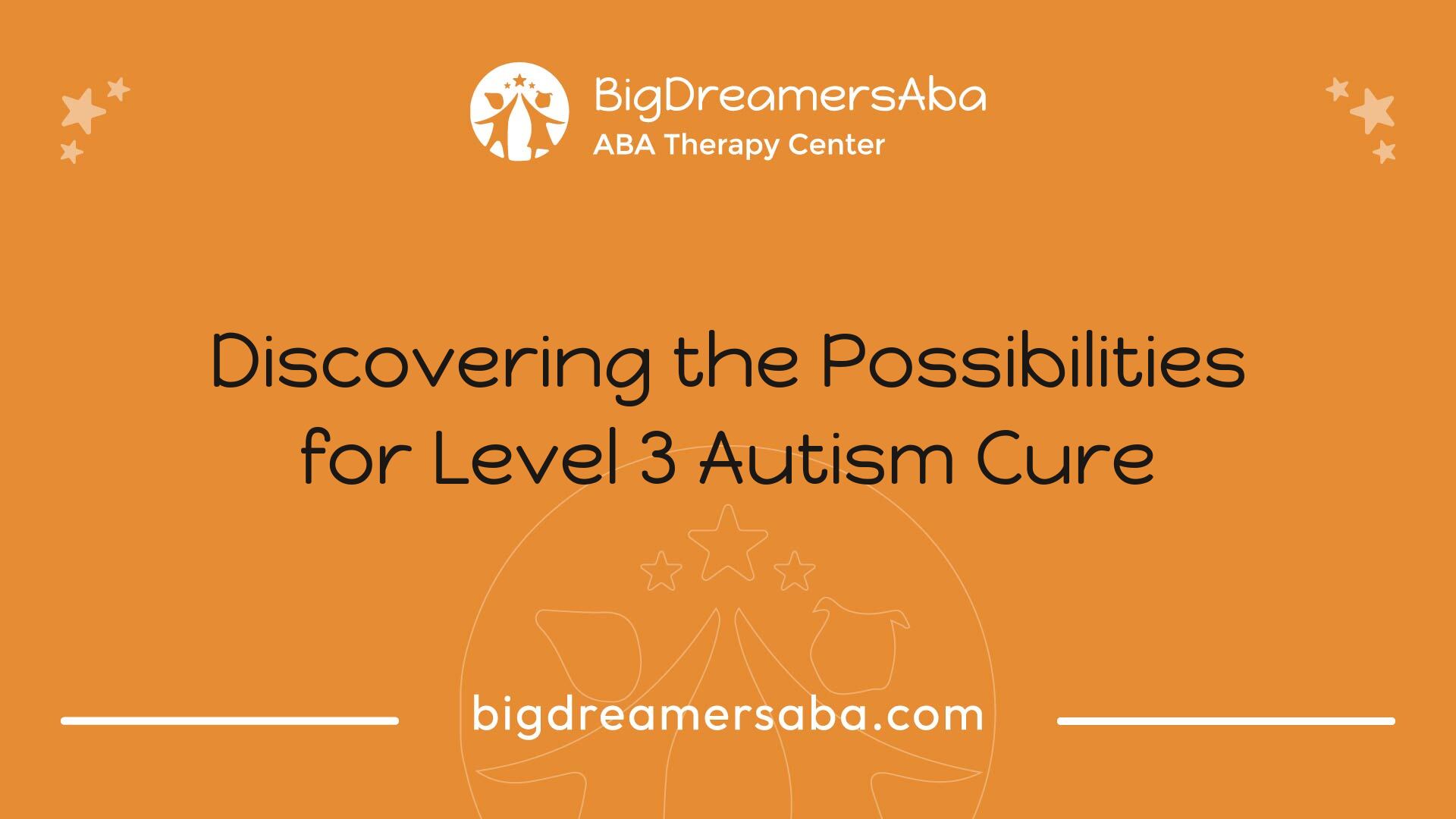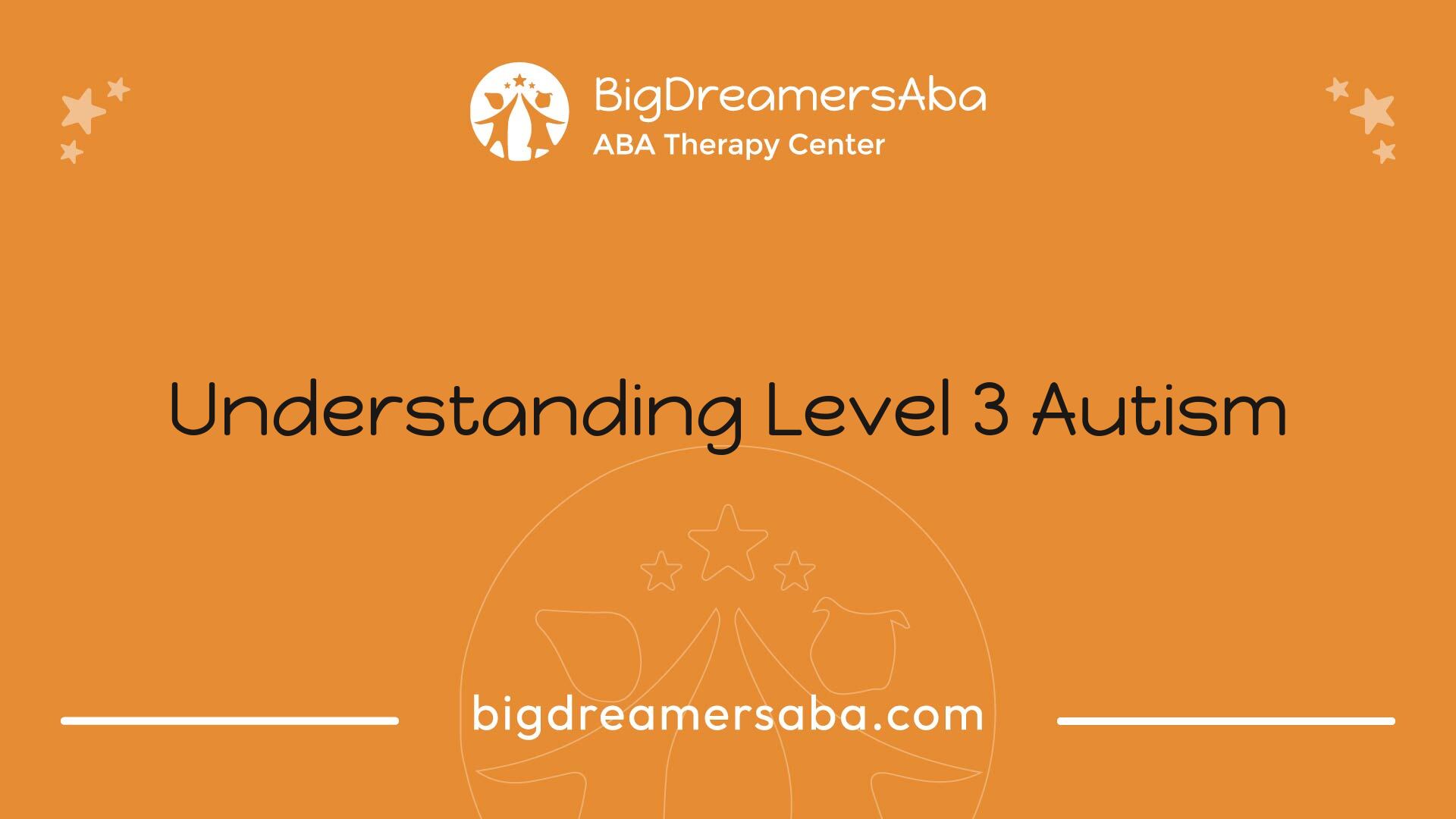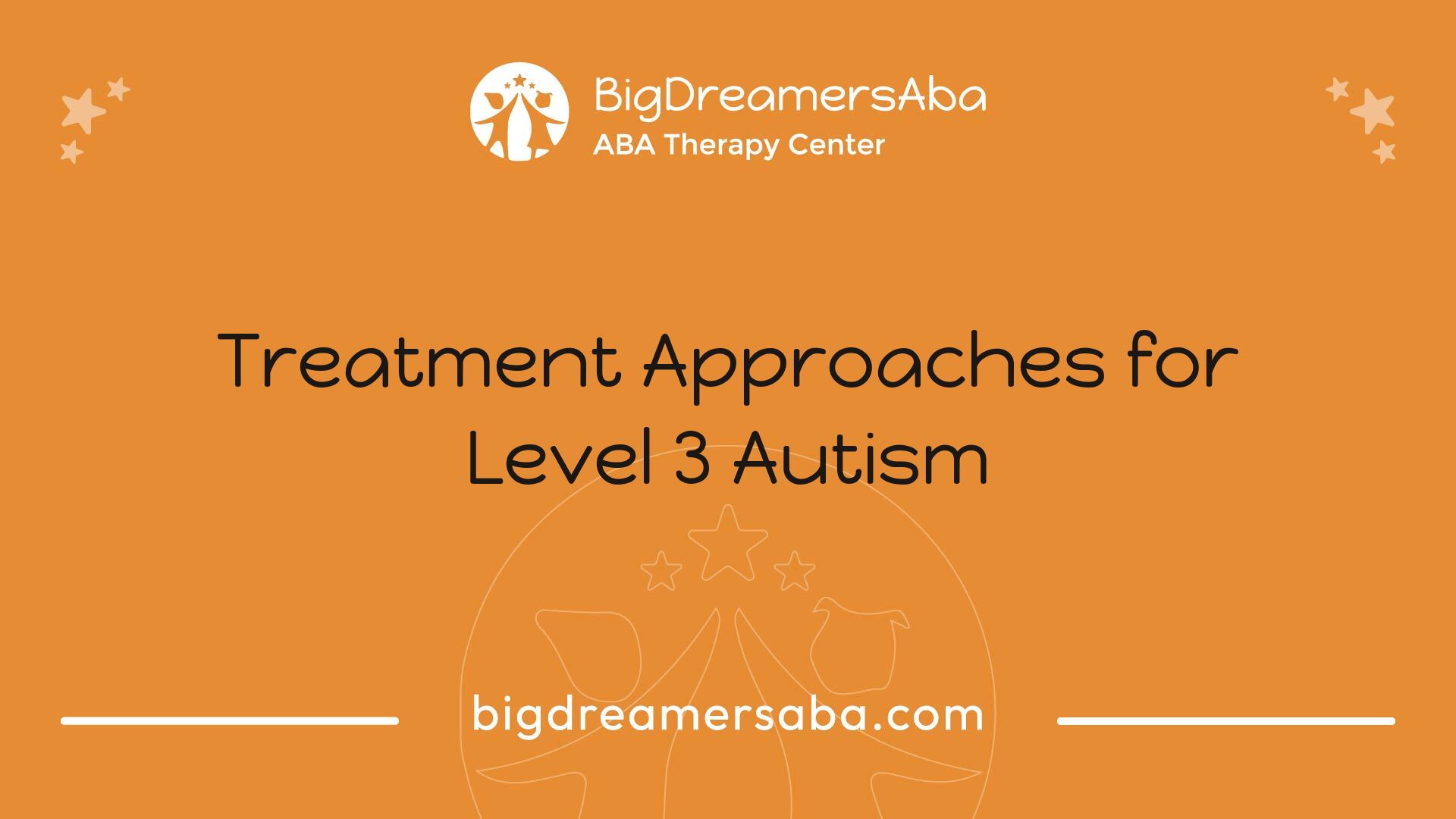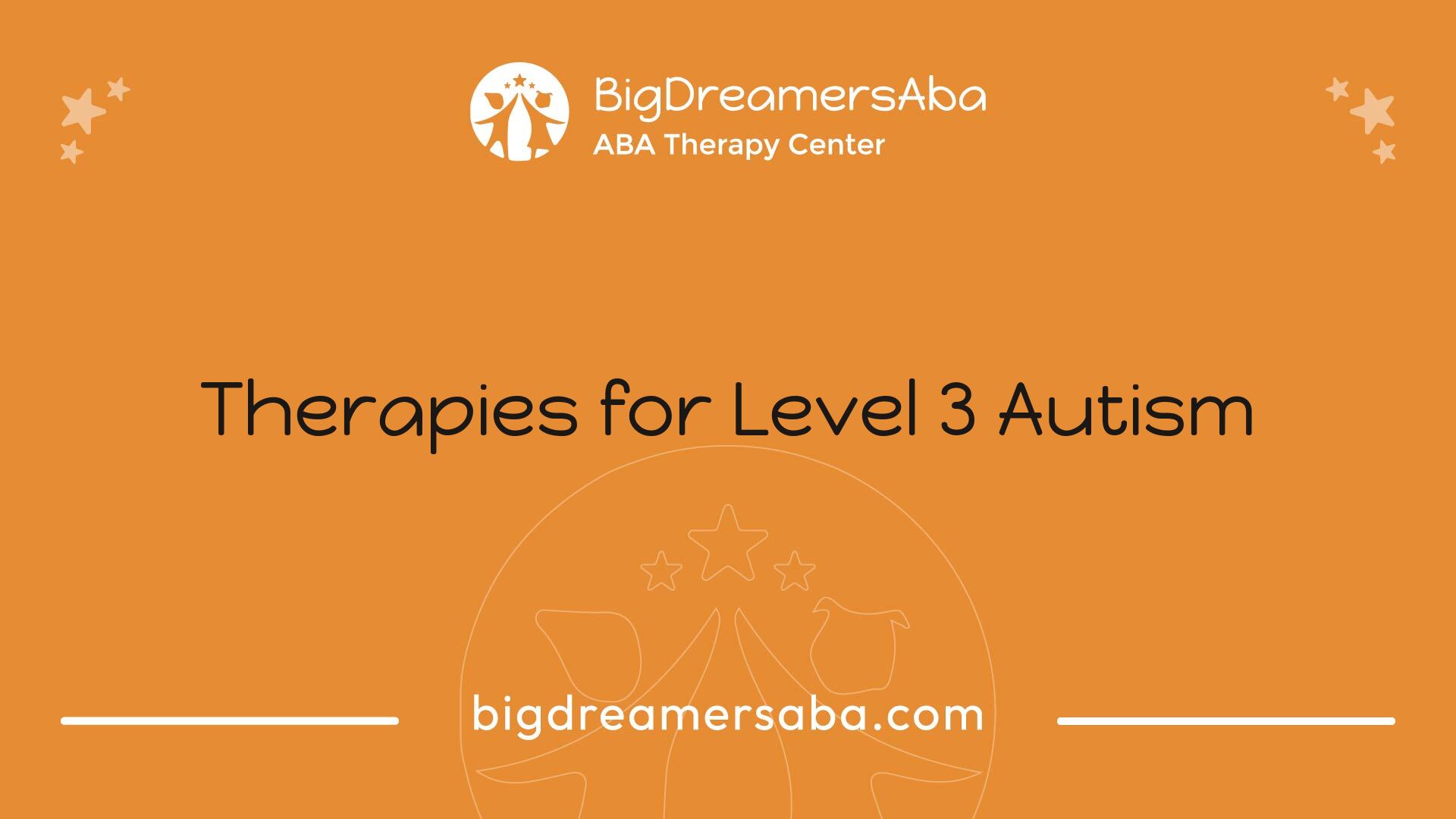Discovering the Possibilities for Level 3 Autism Cure
Explore the question: can level 3 autism be cured? Discover treatment approaches and improve quality of life.

Understanding Level 3 Autism

Definition and Characteristics
Level 3 autism is the most severe classification in the autism spectrum disorder (ASD) framework. It is characterized by a high need for support in daily activities. Individuals with Level 3 autism experience significant communication challenges, engage in repetitive behaviors, and frequently struggle with daily living tasks and social interactions. According to Verywell Health, this category is defined based on the level of support needed rather than solely on functional abilities.
Children diagnosed with Level 3 autism often exhibit severe challenges in social communication and are predominantly nonverbal. They may demonstrate extreme difficulty coping with changes in routine and often engage in restrictive or repetitive behaviors that may hinder their overall functioning [1].
CharacteristicDescriptionCommunication ChallengesPredominantly nonverbal or limited verbal skillsSocial Interaction DifficultiesSevere difficulties in social communicationRoutine AdaptabilityExtreme difficulty coping with changesRepetitive BehaviorsExhibits restrictive behaviors that interfere with functioning
Challenges Faced in Level 3
Individuals with Level 3 autism require substantial support due to a range of severe symptoms. These can include communication difficulties, challenges with social interactions, and struggles in adapting to change. In addition to these core symptoms, individuals may also experience sensory dysfunction, cognitive impairment, and a host of physical symptoms such as sleeplessness, epilepsy, and gastrointestinal issues. Effective management of these symptoms is crucial, and proper care can facilitate better communication through various tools [2].
Addressing co-occurring conditions is vital for improving the quality of life for individuals with Level 3 autism. While a cure for Level 3 autism may not be attainable, certain strategies and early intervention practices can help mitigate symptoms and promote greater autonomy. Such approaches ultimately lead to more favorable outcomes in managing the condition [2].
ChallengeImpactCommunication DifficultiesHinders social interactionDifficulty Handling ChangeCan lead to distress and agitationSensory DysfunctionAffects daily activities and routinesCognitive ImpairmentLimits overall independence and functional skills
These challenges highlight the importance of tailored support systems for individuals with Level 3 autism, underlining the necessity for informed interventions and care strategies. For more information on care strategies, explore our page on autism nursing care plan.
Treatment Approaches for Level 3 Autism

When discussing treatment options for Level 3 Autism, it is essential to understand that while there may not be a definitive cure, various approaches can significantly enhance the quality of life and functional abilities of individuals diagnosed with Autism Spectrum Disorder (ASD).
Applied Behavior Analysis (ABA)
Applied Behavior Analysis (ABA) is a prominent intervention method that focuses on behavioral psychology principles. This approach is widely used to treat children with ASD by encouraging desired behaviors and discouraging unwanted behaviors. ABA employs positive reinforcement techniques that can improve a child's life skills, communication abilities, and social interactions [3].
Through early and consistent intervention, ABA can significantly enhance independence and overall quality of life. Typical outcomes of ABA therapy include:
OutcomeDescriptionImproved CommunicationEnhancements in verbal and non-verbal skillsEnhanced Social SkillsDevelopment of appropriate social interactionsLife Skills AcquisitionSkills necessary for daily living and independence
TEACCH Approach
The TEACCH (Treatment and Education of Autistic and Related Communication-Handicapped Children) approach is another effective method tailored for individuals with autism. This structured teaching method emphasizes visual learning and systematic organization to improve understanding and communication.
Key features of the TEACCH approach include:
FeatureDescriptionStructured EnvironmentUses organized spaces to facilitate learningVisual SupportsIncorporates pictures, symbols, and written words to enhance comprehensionIndividualizationCustomizes teaching methods and materials to suit each individual's needs
The TEACCH method helps individuals with ASD navigate their environment more effectively and encourages independence.
Cognitive-Behavior Therapy (CBT)
Cognitive-Behavior Therapy (CBT) is a therapeutic approach that can also benefit individuals with Level 3 Autism, particularly those who may experience co-occurring conditions like anxiety or depression. CBT focuses on recognizing and changing negative thought patterns and behaviors.
CBT can be particularly effective in:
ApplicationDescriptionAnxiety ManagementTargets and reduces anxiety through structured techniquesBehavioral ModificationEncourages replacing negative behaviors with positive onesEmotional RegulationTeaches strategies to manage emotions effectively
Though CBT requires some verbal communication and cognitive engagement, it can be adapted for individuals with ASD to enhance accessibility and provide meaningful support.
Overall, while understanding that there is no cure for Level 3 Autism, these treatment approaches can significantly improve individual abilities and enrich their lives. For further information on additional autism treatment breakthroughs, consider reading about autism treatment breakthrough.
Therapies for Level 3 Autism

For individuals diagnosed with Level 3 autism, therapies play a crucial role in enhancing communication skills and improving daily functioning. Two prominent therapies beneficial for those with Level 3 autism are speech and language therapy and occupational therapy.
Speech and Language Therapy
Speech and language therapy focuses on improving communication skills and supporting language development. Given that many individuals with Level 3 autism are predominantly nonverbal and face challenges in social communication (The Place for Children with Autism), this type of therapy is essential. Speech therapists use a variety of techniques to help individuals express themselves more effectively and comprehend verbal and non-verbal cues.
Therapy GoalDescriptionImprove CommunicationHelp individuals learn to express their needs, thoughts, and feelings.Enhance UnderstandingTeach recognition of social cues and understanding of language.Increase Functional Use of CommunicationFocus on practical communication skills, including the use of augmentative and alternative communication (AAC) devices.
Through consistent sessions, individuals gain skills that contribute to their independence and enhance their quality of life.
Occupational Therapy
Occupational therapy (OT) is designed to help individuals with Level 3 autism develop skills necessary for daily living. This therapy addresses a wide range of abilities, including fine motor skills, sensory processing, and self-care tasks. Since individuals with Level 3 autism may struggle with daily living tasks, OT can significantly improve their level of functioning in various environments.
OT Focus AreaDescriptionDaily Living SkillsTeach necessary skills for grooming, dressing, and feeding.Sensory IntegrationHelp individuals manage sensory sensitivities and make sense of sensory input.Fine Motor SkillsAssist with improving hand-eye coordination and other motor skills essential for daily tasks.
Occupational therapists create individualized plans that adapt to each person’s unique abilities and challenges, helping them navigate daily life more effectively.
Both speech and language therapy and occupational therapy are integral to the overall treatment framework for individuals with Level 3 autism. These therapies aim to increase autonomy and improve life quality through targeted strategies and support. For further insights into best practices in autism care, consider resources on autism nursing care plans and family autism care team.
Managing Co-occurring Conditions
Individuals with Level 3 Autism Spectrum Disorder (ASD) often face various co-occurring conditions, making comprehensive management essential for improving their overall well-being. This section focuses on the importance of early intervention and the role of medication in managing these conditions.
Importance of Early Intervention
Early intervention is critical for improving outcomes in individuals with Level 3 Autism. Research indicates that timely psycho-educational interventions can significantly enhance autonomy and positively modify outcomes for these individuals [4]. For children diagnosed at a young age, the potential for improvement in skills and quality of life can be considerable.
Several key factors contribute to better long-term outcomes:
FactorImpact on OutcomesEarly DiagnosisAllows for timely interventionChildhood IQHigher IQ predicts better outcomesCommunication SkillsEarly language development leads to improved social skills
According to studies, a significant portion of individuals with ASD still require substantial support due to intellectual disability, highlighting the importance of early support and tailored treatment [4]. While a complete cure is not currently feasible, focusing on early interventions can establish a foundation for improved quality of life.
Medication Utilization
While there is no specific cure for Level 3 autism, medication can help manage certain symptoms and co-occurring conditions, such as anxiety, depression, or attention deficit hyperactivity disorder (ADHD). Medications should not be seen as standalone solutions but rather as part of a comprehensive treatment plan that may include behavioral therapies and other supportive interventions.
It is crucial for parents and caregivers to consult with healthcare professionals regarding appropriate medication options and dosages. Monitoring the effects of medications and making adjustments as necessary can lead to better management of symptoms. Medications may include:
Medication TypeCommon UseSSRIs (Selective Serotonin Reuptake Inhibitors)Manage anxiety and depressionStimulantsHelp with focus and attentionAntipsychoticsAddress behavioral issues
Despite the lack of a definitive cure, integrating medication with behavioral therapies, such as Applied Behavior Analysis (ABA) and Cognitive-Behavior Therapy (CBT), can create a comprehensive approach to managing Level 3 autism symptoms. For more information on treatment options, refer to our articles on autism treatment breakthrough and autism health care.
Improving Quality of Life
Enhancing Autonomy
Enhancing autonomy for individuals with level 3 autism is crucial in improving their overall quality of life. While a complete cure for autism may be unlikely, timely psycho-educational interventions can lead to significant improvements in independent functioning and decision-making abilities [4].
Interventions such as Applied Behavior Analysis (ABA) have been shown to help individuals learn new skills by applying reinforcement strategies that encourage desired behaviors. This approach not only aids in communication and social interactions but also fosters a sense of autonomy by equipping individuals with the necessary skills to navigate daily life more independently.
Intervention MethodBenefitsPsycho-educational InterventionsImproves decision-making abilities and independent functioningApplied Behavior Analysis (ABA)Encourages social skills and communication, promoting independence
Modifying Outcome Favorably
Modifying outcomes favorably for individuals with level 3 autism can be achieved through effective management of co-occurring conditions and early intervention strategies. Although there is no definitive answer to the question, can level 3 autism be cured, utilizing comprehensive treatment plans can greatly enhance the quality of life for these individuals.
Implementing structured therapies, connecting individuals to appropriate resources, and offering support to families can lead to better management of symptoms, including anxiety, mood swings, and attention deficits. Progress in treatment may include the use of medications such as antipsychotics and antidepressants, alongside behavioral therapies to support daily functioning [5].
Treatment StrategyEffects on OutcomeEarly InterventionHelps to manage symptoms effectivelyComprehensive Treatment ProgramsEnhances daily functioning, reduces behavioral issues
Through these strategies, families and caregivers can work together to ensure that individuals with level 3 autism receive the support they need to lead fulfilling lives, navigating social environments with improved autonomy and reduced challenges. For more information on autism care resources, visit our page on autism nursing care plans.
References
[2]:
[3]:
[4]:
[5]:
Recent articles

How to Address Sleep Challenges in Children Receiving ABA Therapy

How Big Dreamers ABA Addresses Sensory Processing Challenges
